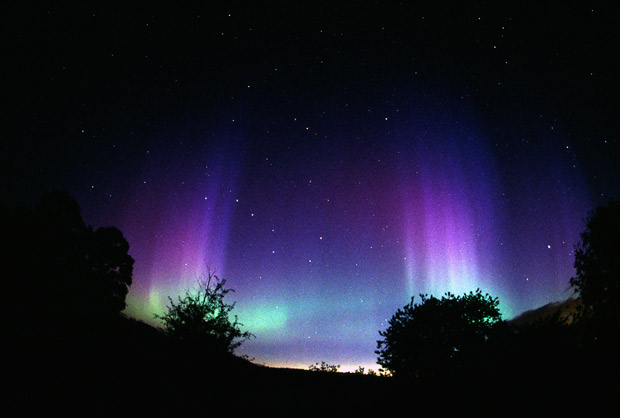As far as must-see goes, the Northern Lights is up there with the best but do you know what they are and what causes the show-stopping Aurora Borealis?
You stare agog into the Arctic night and marvel as curtains of rippling emerald or stabbing blood-red fingers shimmer and shimmy overhead.
Stamping your feet against the cold it is hard to imagine that this frozen firework display has its origins 93 million miles away – although the idea of being thousands of degrees warmer might appeal.
But it is true: the Northern Lights originate in the Sun. They are caused by the solar wind, a jet stream of charged particles (mostly electrons) that slam into oxygen and nitrogen molecules in Earth’s upper atmosphere, making them glow like the gas in a fluorescent tube.
These solar particles tend to travel along the lines of the planet’s magnetic field, which concentrate near the poles and dip earthwards, so the phenomenon tends to be strongest in a ring about 1,500 miles from the magnetic poles.
Currently this ring passes right over northern Norway. Truls Lynne Hansen, of the Tromsø Geophysical Observatory, says: “The coast of the counties of Troms and Finnmark is where the Northern Lights appear with the greatest frequency of all.
“It’s hardly an exaggeration to say that we can see them at least every other clear night. So it’s obvious that northern Norway, with its easy accessibility and mild winter climate, is an attractive place to view them.”
The best way to access Norway’s northern coast is on a Hurtigruten ship, which has plied the route from Bergen to the Russian border for almost 125 years. The 12-day round trip provides fantastic opportunities to see the lights, and Hurtigruten is so confident that if they do not appear at least once on a 12-day voyage between October and March it will give you another cruise for free.
To really understand the lights and other cosmic phenomena, try one of Hurtigruten’s Astronomy Voyages. In addition to the company’s regular cruise itinerary you will enjoy the stimulating company of a British professional astronomer, such as the physicist and Sky at Night broadcaster John Mason, or Ian Ridpath, editor of the Oxford Dictionary of Astronomy.
He will take you on deck for a guided tour of the Arctic night sky, and deliver a series of fascinating lectures on everything from solar eclipses to the origins of comets.
You will also have a special visit to the Tromsø Science Centre and its planetarium, the northernmost in the world, where the lights are explained and reproduced in all their glory.
Another on-board lecture covers a journey of scientific discovery that is as riveting as the lights themselves. Galileo appears to have coined the name aurora borealis – although he got the explanation wrong.
In 1790 Henry Cavendish first measured the lights’ altitude (about 60 miles for the most common, green displays, although reds and purples can be 200 miles up). But science had to wait until 1903 for a full explanation, from Norwegian scientist Kristian Birkeland.
There is mythology too. You will hear that the Vikings may have associated the lights with Bifröst, the celestial bridge from Earth to the gods, while the Sámi people of northern Norway believed the displays were spirits that might kidnap or kill anyone who treated them with disrespect. Even today many Sámi will not point or whistle at the lights.
The Sámi called the lights Guovssahas, meaning “audible light”, as they believed they were alive and able to talk.
Do the lights really speak? Many people claim to hear crackling noises during intense auroras, and although sound itself could not carry from 60 miles up it is possible that the lights’ powerful electrical field might create noises at ground level or even act directly on the auditory nerves.
Ask your resident Hurtigruten astronomer. It could spark an interesting debate.















